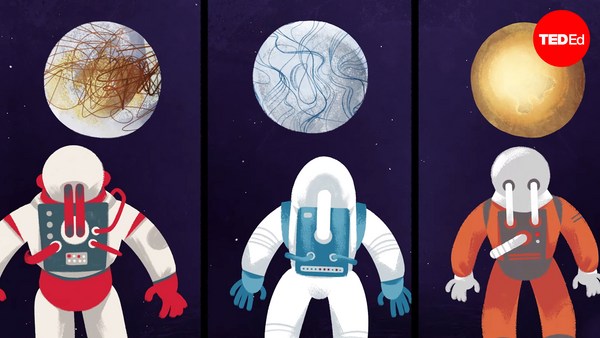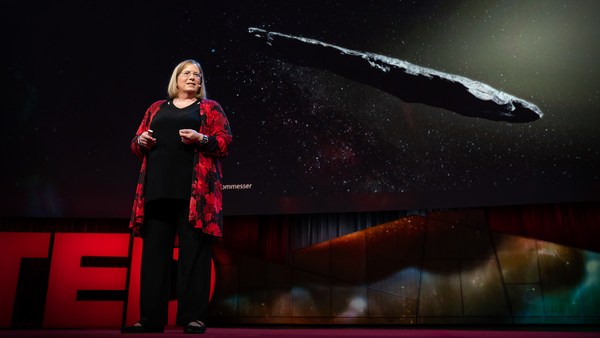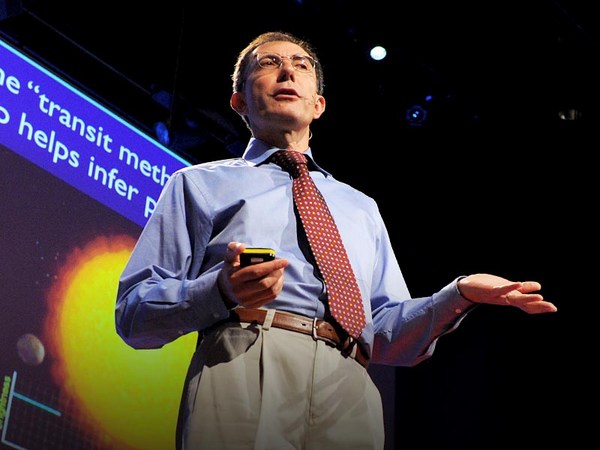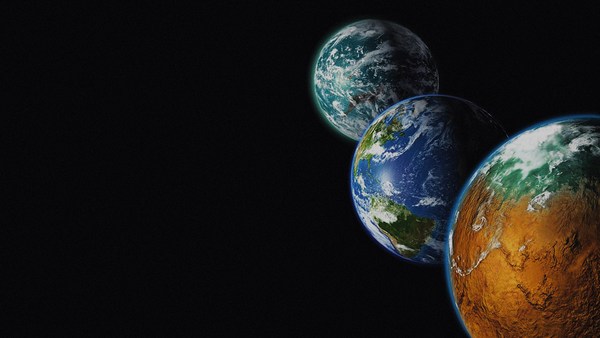It's my job to find aliens, so as you might guess, I spent a lot of time thinking about them, imagining little green women meeting up with their friends, commuting to work. And that gets me thinking about alien astronomers trying to find us in their night sky. If these alien astronomers had looked in our direction in the last century, they would have been really excited to detect unequivocal signs of technology. But what if they looked ten thousand years ago, before we showed signs of civilization? Would they shrug in disappointment and go look elsewhere for life?
No, and neither should we. Instead, we can look for other signs of life. For example, if those alien astronomers had looked our way 10,000 years ago, they might notice that even without signs of civilization, we still looked slightly unusual. For one, we have a thick and temperate atmosphere, but more notably, we have suspiciously large amounts of oxygen in the atmosphere. This would be a really encouraging sign of life for my alien colleagues because the composition of the Earth's atmosphere can only sustain itself through a biological cycle. So can we do the same to them? I'm certainly trying.
I am a quantum astrochemist, which means I study the quantum interactions between molecules and light in space. We can't see these molecules or even the planets they're on. But when light from a star goes through an alien atmosphere, each molecule within it leaves a unique fingerprint in the starlight that I can see from here. And I look for the fingerprints of molecules that could be associated with life, or biosignatures, like complex pollutants or oxygen. In the context of Earth, oxygen is a wonderful biosignature, but oxygen is not that hard to make. So, for example, if our sun had different levels of radiation or if our oceans were evaporating from a runaway greenhouse effect, then large amounts of oxygen could accumulate in our atmosphere without biology, and then oxygen would be a false positive for life. So maybe oxygen won't be the solution to finding life beyond Earth, but then what is?
Well, my specialty is to look for unusual molecules that have fewer false positives for life because they're so difficult to make that they're rarely made spontaneously. And my favorite of those unusual molecules is phosphine. When I first started working on phosphine about a decade ago, people had a hard time thinking of it as a biosignature at all. Instead, it was known for being this horrific, foul-smelling molecule that messes with life's ability to use oxygen, making it a really effective killer. Because of this fatal interaction with oxygen metabolism, phosphine is used widely as a pesticide and sadly for the same reason it was used many times in chemical warfare. Phosphine can be made in the lab, and it's also produced in the extreme environments found inside gas giants like Jupiter and Saturn. But on rocky planets like the Earth, it is rarely created accidentally. So we don't really expect to find phosphine on Earth at all. And yet we do. We find it in small amounts throughout the globe, and in some places in strangely large quantities, places like swamps and rice fields and lake beds and the excrements and guts of most animals. And what all of these ecosystems have in common is that they all host organisms that are not reliant on oxygen, so phosphine can't hurt them. Indeed, phosphine seems to be safely and enthusiastically produced in all of these oxygen-poor ecosystems.
So I figured, maybe other planets with life less reliant on oxygen than ours could also have phosphine, but as a really popular biosignature. And here's the best thing about phosphine. Because it's so hard to make on rocky planets like the Earth, it has almost no false positives for life. So I started considering what telescopes we would need to detect phosphine on planets in our galactic neighborhood. Because if we did, I predicted it could only mean life. I was imagining a distant planet, a oxygen-poor tropical paradise with a phosphine-rich biosphere that we might one day be able to detect.
But turns out phosphine was a little more exciting than I had initially envisaged because a few months after I finished this work an astronomer, Jane Greaves, reached out to me asking for help with interpreting a telescope signal seen here in white. Then months later, another signal, seen here in orange, that seemed to indicate that phosphine might be present not on a distant planet, but right next door, on the clouds of Venus.
So did we do it? Did we find life beyond Earth? We don't know. These Venus observations were noisy and preliminary, so we still need to confirm, without a doubt, that the signal is real, and if it is, we need to make sure it's not another molecule mimicking phosphine's fingerprint. And if it is unambiguously phosphine, we still need to figure out what or who is making it, because maybe it's true that life is the best explanation for the presence of phosphine on a planet like Venus. But maybe that's wrong and there's an exotic but not biological way of making phosphine that no one has thought of yet.
Either way, as much as I love phosphine, I don't think that's how we'll find life. The detection of life will likely not come from a single molecule. No matter how special it is. We'll have to detect a whole biosphere producing a complex network of gases that together form a message that reads: “We’re alive!” As the Venus story shows, the detection of life will likely be uncertain, but Venus is the perfect lab for us to test our theories of biospheres and how to interpret them. If we learn to understand the atmosphere of Venus and the message it contains, then we can find out if we got it right by going there and checking. And we'll do that at the end of the decade.
But this will not be the last time that we have the discovery of a biosignature on a potentially habitable planet, and next time we won't be able to just go there and check. So my biggest concern is not that we will fail to find a habitable planet in our lifetimes. My biggest concern is that we'll point our very expensive telescopes directly at an inhabited planet and just not know we did it. But I am determined to not miss life. So, yes, I will look for the unambiguous but quite unlikely signs of technology like complex pollutants. And I'll look for the pleasant and familiar but potentially misleading signs of life, like oxygen. And of course, I'll keep looking for the strange and scary biosignatures like phosphine. But crucially, I will look for all the molecules that can together paint a holistic picture of a biosphere. All of this so that one day we'll know life when we see it.
Thank you.





